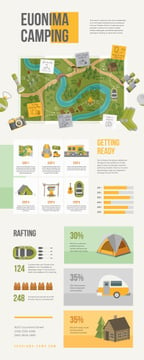Bell camping tents are ending up being significantly popular as flexible, fashionable shelters for camping and glamping. However what's the background behind this long-lasting design?
What benefits can you get in camping?
Henry Hopkins Sibley patented the single-pole conelike tent that we know as a bell camping tent. Nonetheless, he abandoned to the Confederacy and never ever received his nobilities.
Inevitably, somebody else included short walls to the cone cover and invented what we now know as a bell outdoor tents.
Beginnings
The appeal of bell outdoors tents is growing, and they're now a staple at camping celebrations and as fashionable yard hideaways. Their spacious interiors offer a versatile home from home atmosphere that's suitable for family members and teams of buddies, while the circular design assists with stability in strong winds.
The style of the contemporary bell camping tent can be mapped back to armed forces outdoors tents made use of by European militaries throughout the Crimean Battle in 1853-1856. After that, in America, a soldier called Henry Hopkins Sibley patented a comparable framework that attracted ideas from American Tipis.
Both layouts are still in use today. Nevertheless, Sibley camping tents vary from their even more current relatives because they have side wall surfaces and a raised larger entrance. Sibley tents also rely on a single central post for assistance that makes them less complex to establish yet restricts setup choices.
Function
Bell tents' distinct shape and spacious interiors make them the ideal choice for a wide variety of outdoor activities. Whether you're hosting a yard camping event, glamping at a remote all-natural hideaway or taking place an impressive fantasy-inspired journey, the adaptability of these camping tents makes certain that your experience will certainly be comfortable and stylish.
The bell-shaped outdoor tents was initially patented in 1856 by Henry Hopkins Sibley, that had developed the design after observing Native American tipi tents. Nonetheless, he surrendered from the United States Army at the outbreak of the Civil War, forfeiting his civil liberties to future aristocracies.
Ever since, the style has ended up being a staple of lots of glamping experiences. These glamorous tents often feature deluxe bed linen and en-suite shower rooms, providing campers the opportunity to enjoy nature without giving up convenience.
Design
In the modern day, bell outdoors tents have actually experienced a renewal in popularity, as individuals choose a more immersive exterior experience. They are made use of in a selection of setups, consisting of outdoor camping, glamping, and occasions. Their special shape, roomy insides, and reasonably simple assembly make them a preferred option for those seeking an elegant, historical style to their outdoor experiences.
The distinct form of a bell tent develops high ceilings and enough clearance, making it comfy to stand in and move around. In addition, the facility pole is not positioned near the entry of the camping tent, allowing for even more privacy and room inside the sanctuary.
The bell tent style traces back to an American soldier named Henry Hopkins Sibley, that was influenced by Indigenous American tipi camping tents when developing his variation of the bell camping tent in 1856. His design was a substantial enhancement over traditional military outdoors tents, which were challenging to transport as a result of their challenging building and construction.
Products
In modern times, Bell Tents are crafted from exceptional materials that are designed for resilient sturdiness. This is why they are a popular selection among recreational campers, festival-goers, and glampers alike.
In the 19th century, a United States Army police officer called Henry Hopkins Sibley adapted standard tents right into what outdoor tent is now called the contemporary bell outdoor tents. He based his style on Indigenous American Tipi structures, adding brief walls to the main post structure that made it much more stable.
Today, polycotton canvas is an usual material made use of in the construction of bell outdoors tents. This blend of cotton and polyester uses a large range of advantages, consisting of breathability, premium climate resistance, and much easier upkeep than pure cotton canvas. This textile is also sturdy and abrasion-resistant. It is thicker than many nylon textiles, nevertheless, which can make it hefty and much more pricey than normal camping tents.
Contemporary
In modern, the appeal of Bell Tents has blown up thanks to glamping websites and festivals providing these spacious camping tents for pairs, groups and households to enjoy. The aesthetic allure and sturdiness of these round outdoors tents are attracting numerous campers.
Whether it be rain or wind, these camping tents hold their very own against the components. Typically, they're made with canvas that is treated to shield against dampness, mildew and UV rays.
What size bell tent do I need?
It isn't clear exactly when these camping tents were invented, yet it's widely recognized that they're a variation of a Sibley outdoor tents - named after Henry Hopkins Sibley, that adapted the style of the American Indian tipi. It is thought that whoever included brief walls to Sibley's cone cover was accountable for the production of the bell camping tent as we know it today.
